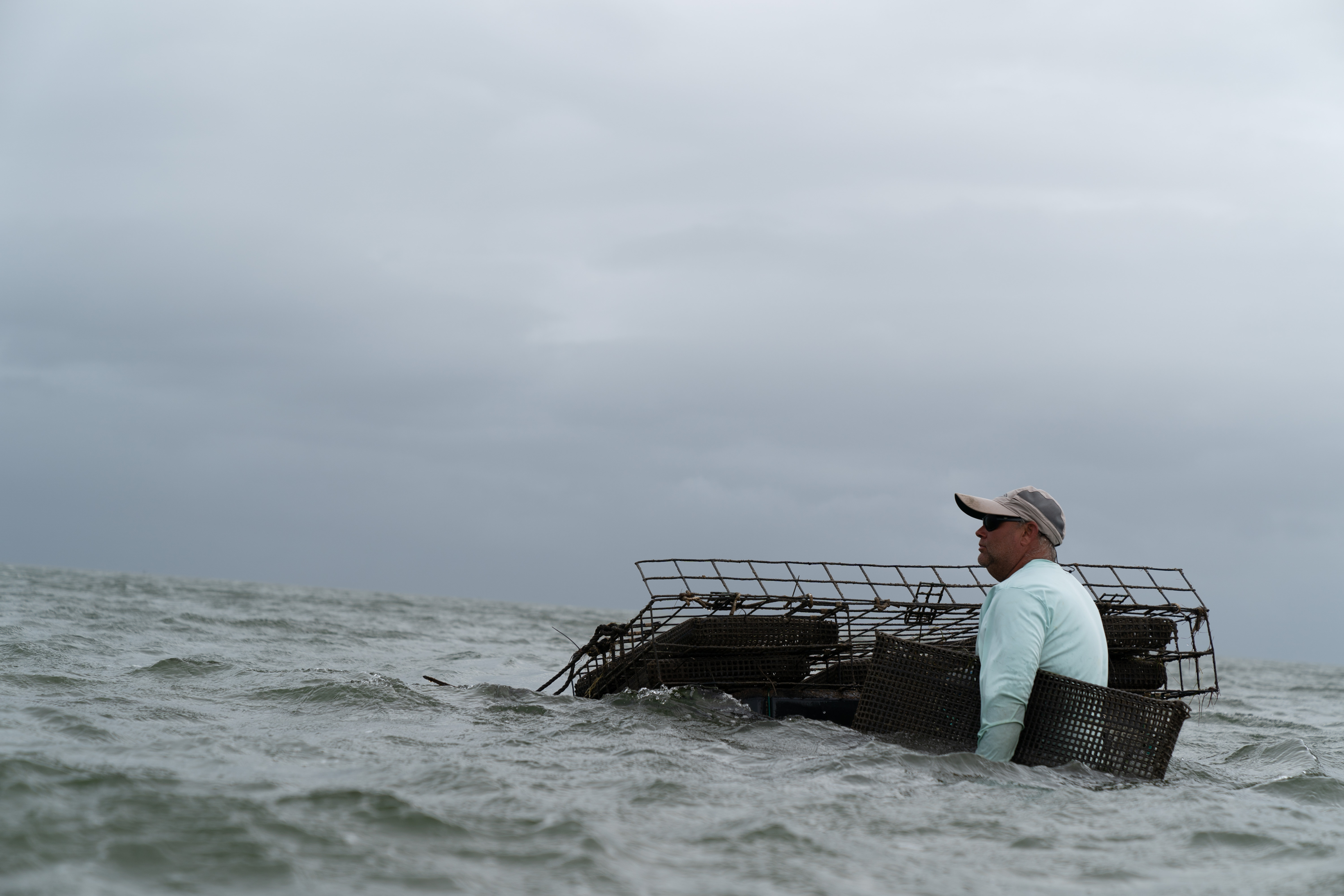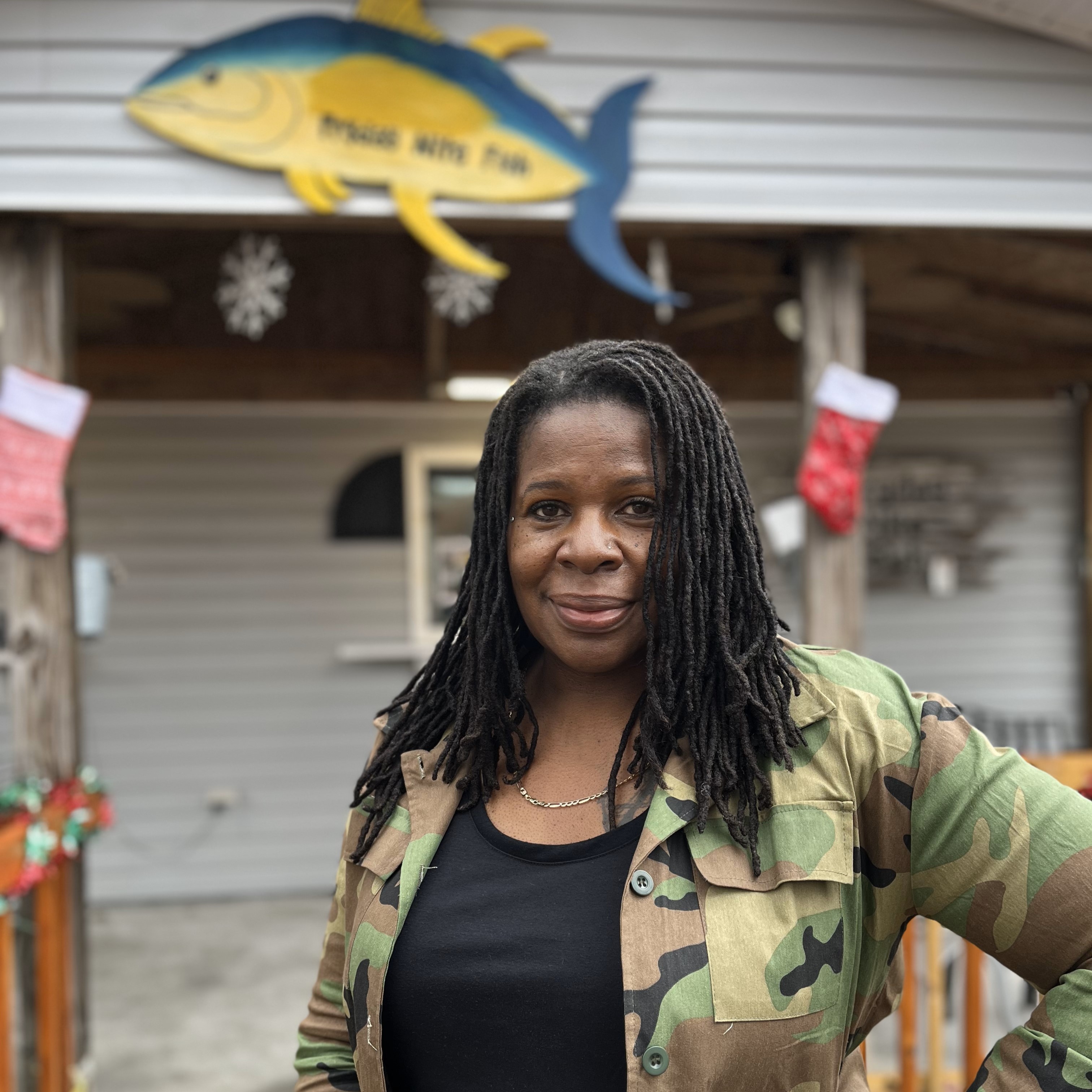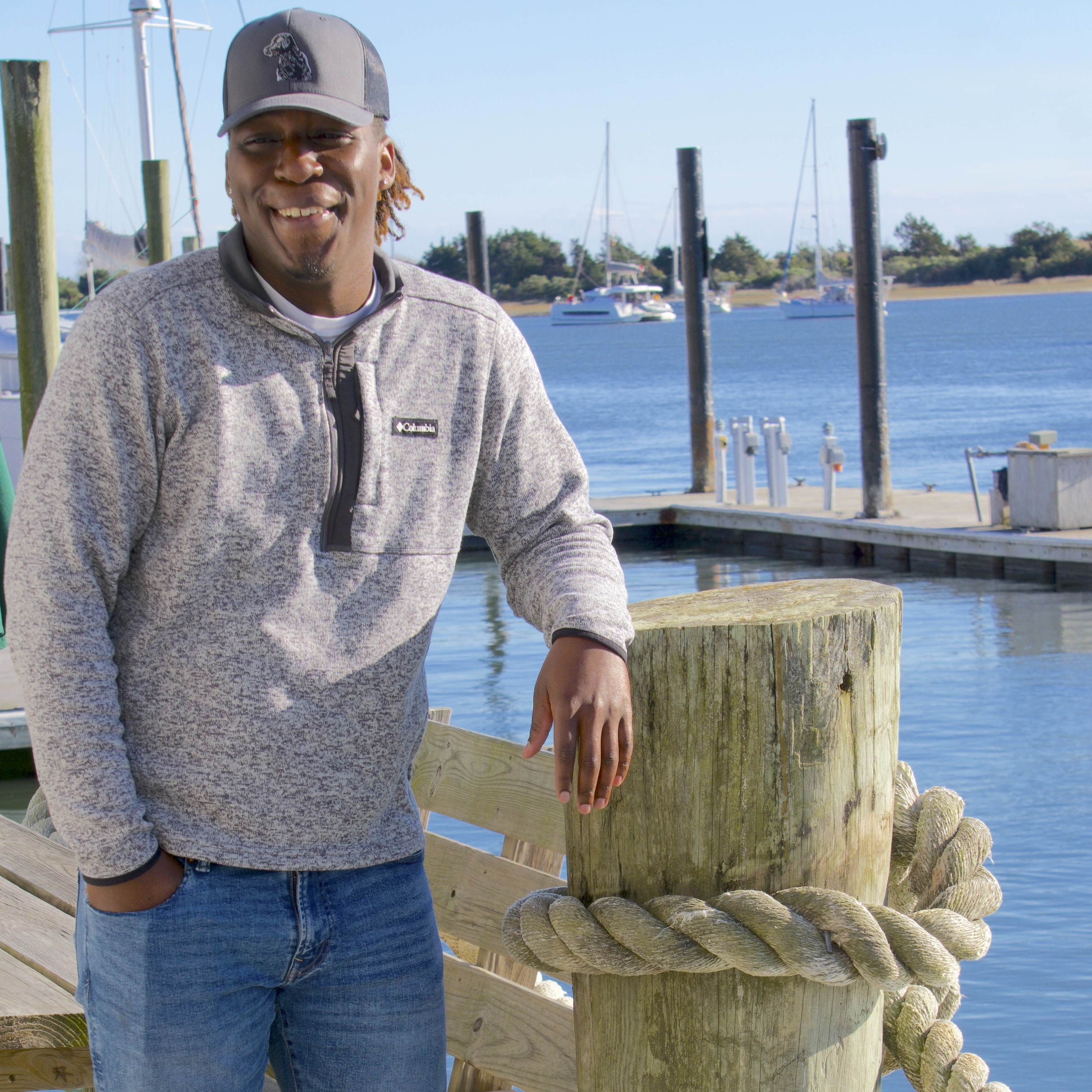Mariculture Spawns Opportunity

July 2019
Tideland Topics
By Heidi Jernigan Smith
Photos by Mark Collie
Whether you’re an oyster aficionado or not, you’ve probably heard that oysters can only be enjoyed during months that contain the letter “r”. Wild oysters are indeed pretty undesirable May through August during the spawning cycle, which makes them soft and not very tasty.
Fortunately, the bivalves can now be enjoyed year round thanks to a mariculture industry spawning in Tideland territory. But it’s the industry that’s spawning. Not the actual oyster.
Aquaculture refers to raising aquatic crops and animals in land-based water environments such as ponds and tanks. In Tideland territory that’s most often catfish, hybrid-striped bass and tilapia. Mariculture is the cultivation of food in coastal waters and the trade is usually plied by experienced watermen hoping to supplement dwindling commercial fishing incomes. To date, the primary focus of local mariculture activities has been oysters and clams.
Traditionally, growers planted oyster shells on lease bottoms to create a place for free- swimming oyster larvae to attach and become oyster spat. Those that did attach and grow took two to three years to reach marketable size.
Today’s producers grow oysters in the water column by placing oyster seed in cages that either float or are suspended off the bottom. These growers use sterile triploid oysters. Because triploids do not spawn, all their energy is used to filter water from which the oyster gets its nourishment. Steady and continuous growth makes the oysters more meaty and harvestable year round. Of course all shellfish, regardless of growing method, can be subject to area closures by state officials based on water quality conditions.
Caged oysters are routinely sorted by size and transferred to other cages to reduce crowding. While more labor intensive than traditional oystering, this technique produces consistently sized, single oysters with deep cups that typically have more meat than wild oysters or those planted on the bottom. Restaurants find the uniformity and cleanliness of grown oysters highly desirable for half-shell menus. The oysters also sell for three times more than their wild counterparts.
Like all marine occupations, oyster growers must contend with forces beyond their control. Several growers have struggled to overcome the damaging affects of Hurricane Florence including freshwater inundation.
To date, North Carolina’s oyster mariculture success has lagged far behind that of Virginia. In 2016, Virginia had oyster mariculture sales totaling $16.5 million. For the same year, North Carolina sales were $2.5 million.
When applying a conservative economic multiplier of 3x, grown oysters generate approximately $7.5 million in state economic activity. A study by the NC Policy Collaboratory believes the state can achieve $33 million in farm-gate sales by 2030, which would have a total economic activity valuation of $100 million. Culinary experts have in fact suggested that our state could become a “Napa Valley of Oysters”given the diversity of growing environments presented by our coast’s unique geography. There are even aspirations of creating an oyster trail to create additional revenue streams through ecotourism and guided tasting events.
And it all starts with a tiny larvae that becomes spat, then a mature oyster that becomes your meal. Be part of the oyster economic cycle. Buy local. Eat local. And promote local. And when you’re done be sure to recycle the shells!





